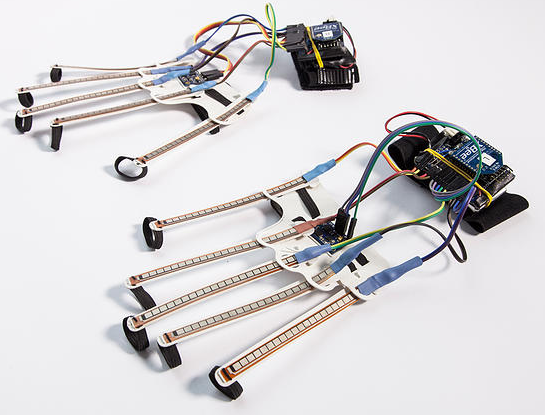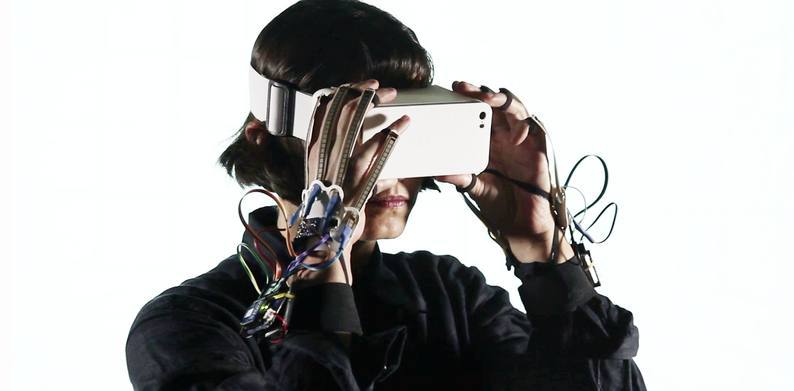Lately we’ve been seeing a convergence between 3D printing and virtual reality in more ways than one. Whether it’s 3D modeling software which places the user in a virtual world with their model, like that of VRClay, or 3D printed physical components for virtual reality headsets, the technologies are in fact complementing each other in an ever expanding manner.
With both 3D printing and virtual reality being incredibly important technologies of tomorrow, there is no wonder why the two are converging in such a way. We’ve seen many applications already, but what was recently unveiled by a student at ETH Zurich, named Constantinos Miltiadis, may have taken the cake.
Miltiadis has been working on Project Anywhere, a kit which challenges the limits of human physical presence within a space. Combining both augmented reality and virtual reality, the Project Anywhere system may just change the way we communicate over distances as well as interact with others in a virtual space.
We have all seen the kits which turn a smartphone into a virtual reality headset. In fact, just last week we covered a 3D printable device which turns the feature rich OnePlus One smartphone into a VR headset. Miltiadis’s Project Anywhere is more than just a 3D printed headset though. It’s an entire ecosystem, created to engage a user’s senses like never before.
 At the center of the project lies the smartphone application that runs it all, which was developed with Unity3D and Java. It functions as a network which is decentralized, allowing users to enter the virtual space on a whim. The application is able to communicate via the cloud with sophisticated software and other users in real time. On the hardware side is where things get really interesting. Not only is the apparatus that turns a typical smartphone into a VR headset 3D printed, but special ‘Inteligloves,’ which allow a user to interact fluidly within the virtual environment, are 3D printed as well.
At the center of the project lies the smartphone application that runs it all, which was developed with Unity3D and Java. It functions as a network which is decentralized, allowing users to enter the virtual space on a whim. The application is able to communicate via the cloud with sophisticated software and other users in real time. On the hardware side is where things get really interesting. Not only is the apparatus that turns a typical smartphone into a VR headset 3D printed, but special ‘Inteligloves,’ which allow a user to interact fluidly within the virtual environment, are 3D printed as well.
The Inteligloves are printed with special rubber-like PLA filament to allow for movement. Attached to the gloves are flex sensors which wirelessesly send hand movement data back to the application, after quantizing those movements via a special software called Omnitracker. The gloves are able to track palm orientation (pitch, yaw, and roll), in addition to finger movement, via six bend sensor sockets. The main components of the gloves, which can easily be 3D printed on a typical desktop 3D printer in just a couple of hours, play an integral part in this system.
“I don’t know of anything else that can have your own body in a digital environment, so you can control an avatar through a joystick but your body doesn’t play any role. So if you can, in real time, interact in this kind of augmented reality environment and have your own body as a digital avatar, I think this is the different
innovation that it brings,” explained Miltiadis.
The gloves themselves are constructed with a main 3D printed base in addition to an Arduino Mini Pro, Xbee radio module, inertia measuring unit, six bend sensor sockets, and a LiPo battery.
The project is still under development and is certainly showing promise. Whether it is eventually used for gaming, business, or any number of other possible applications, Project Anywhere shows us once again how important 3D printing can be to yet another industry, that of virtual reality.
What are your thoughts on this VR project? Let us know in the Project Anywhere forum thread on 3DPB.com. For more information on some of the components of this project, check out studioany.com. Check out the video below for a better understanding of how the system functions:
Subscribe to Our Email Newsletter
Stay up-to-date on all the latest news from the 3D printing industry and receive information and offers from third party vendors.
You May Also Like
Precision at the Microscale: UK Researchers Advance Medical Devices with BMF’s 3D Printing Tech
University of Nottingham researchers are using Boston Micro Fabrication‘s (BMF) 3D printing technology to develop medical devices that improve compatibility with human tissue. Funded by a UK grant, this project...
3D Printing Webinar and Event Roundup: April 21, 2024
It’s another busy week of webinars and events, starting with Hannover Messe in Germany and continuing with Metalcasting Congress, Chinaplas, TechBlick’s Innovation Festival, and more. Stratasys continues its advanced training...
3D Printing Webinar and Event Roundup: March 17, 2024
It’s another busy week of webinars and events, including SALMED 2024 and AM Forum in Berlin. Stratasys continues its in-person training and is offering two webinars, ASTM is holding a...
3D Printed Micro Antenna is 15% Smaller and 6X Lighter
Horizon Microtechnologies has achieved success in creating a high-frequency D-Band horn antenna through micro 3D printing. However, this achievement did not rely solely on 3D printing; it involved a combination...






























